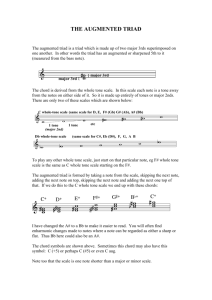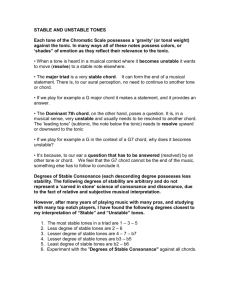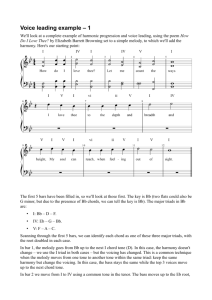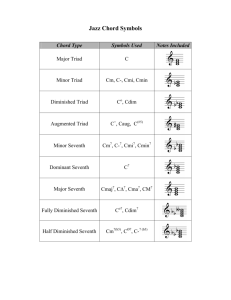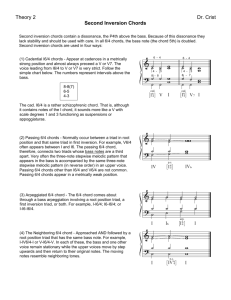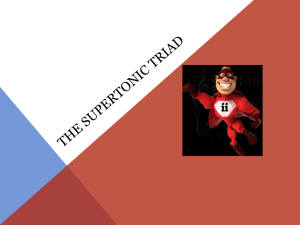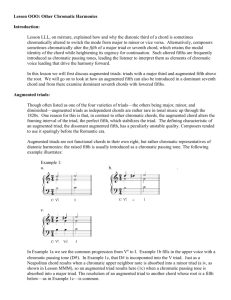A Guide to Part Writing Involving Root Position Triads
advertisement
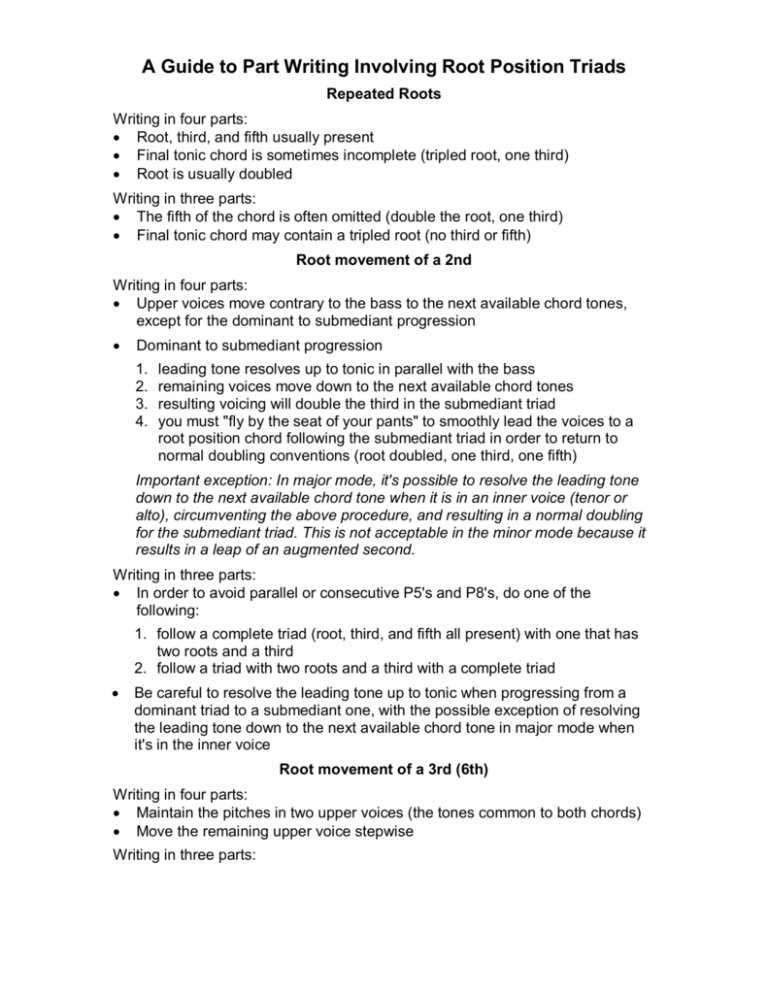
A Guide to Part Writing Involving Root Position Triads Repeated Roots Writing in four parts: · Root, third, and fifth usually present · Final tonic chord is sometimes incomplete (tripled root, one third) · Root is usually doubled Writing in three parts: · The fifth of the chord is often omitted (double the root, one third) · Final tonic chord may contain a tripled root (no third or fifth) Root movement of a 2nd Writing in four parts: · Upper voices move contrary to the bass to the next available chord tones, except for the dominant to submediant progression · Dominant to submediant progression 1. 2. 3. 4. leading tone resolves up to tonic in parallel with the bass remaining voices move down to the next available chord tones resulting voicing will double the third in the submediant triad you must "fly by the seat of your pants" to smoothly lead the voices to a root position chord following the submediant triad in order to return to normal doubling conventions (root doubled, one third, one fifth) Important exception: In major mode, it's possible to resolve the leading tone down to the next available chord tone when it is in an inner voice (tenor or alto), circumventing the above procedure, and resulting in a normal doubling for the submediant triad. This is not acceptable in the minor mode because it results in a leap of an augmented second. Writing in three parts: · In order to avoid parallel or consecutive P5's and P8's, do one of the following: 1. follow a complete triad (root, third, and fifth all present) with one that has two roots and a third 2. follow a triad with two roots and a third with a complete triad · Be careful to resolve the leading tone up to tonic when progressing from a dominant triad to a submediant one, with the possible exception of resolving the leading tone down to the next available chord tone in major mode when it's in the inner voice Root movement of a 3rd (6th) Writing in four parts: · Maintain the pitches in two upper voices (the tones common to both chords) · Move the remaining upper voice stepwise Writing in three parts: · Be especially careful of ascending root movement. Make sure all three members of the triad are present to avoid the perception that the chord has progressed from root position to an inverted form of the same triad. Root movement of a 4th (5th) Writing in four parts: · Three common methods: 1. Common tone/2 voices by step in parallel o Retain in an upper voice the tone common to both chords o Move the two remaining upper voices by step in parallel motion 2. Upper voices move in similar motion to the next available chord tone rd rd 3. Common tone/3 to 3 /voice by step o Retain in an upper voice the tone common to both chords o Upper voice that has the third in the first chord leaps to the third in the second chord o Remaining upper voice moves by step to the chord tone that results in the correct doubling Writing in three parts: · Smooth voice leading is more important than having a complete chord (you may leave out the fifth)

